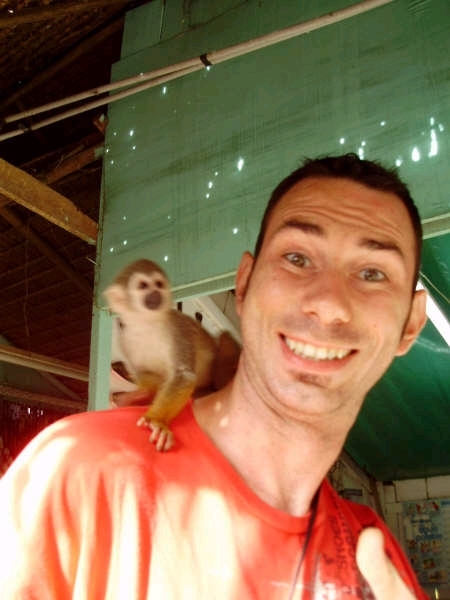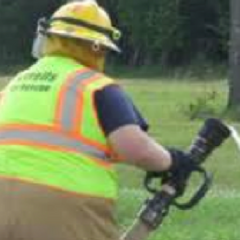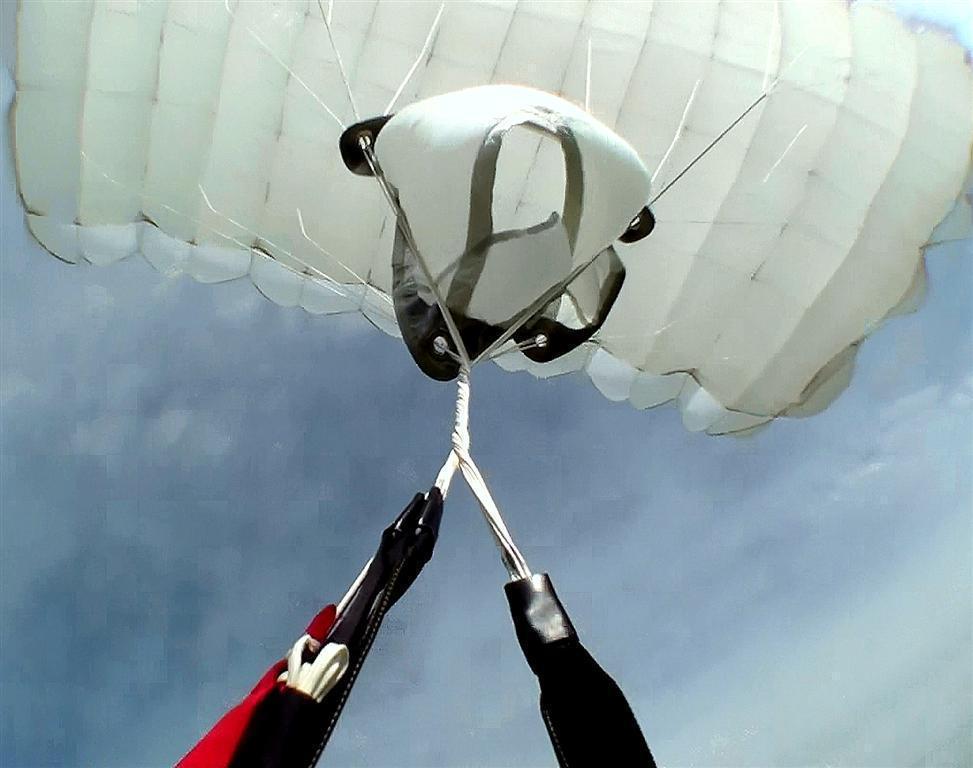Leaderboard
-
in all areas
- All areas
- Adverts
- Advert Questions
- Advert Reviews
- Videos
- Video Comments
- Blog Entries
- Blog Comments
- Images
- Image Comments
- Image Reviews
- Albums
- Album Comments
- Album Reviews
- Files
- File Comments
- File Reviews
- Dropzones
- Dropzone Comments
- Dropzone Reviews
- Gear
- Gear Comments
- Gear Reviews
- Articles
- Article Comments
- Article Reviews
- Fatalities
- Fatality Comments
- Fatality Reviews
- Stolen items
- Stolen item Comments
- Stolen item Reviews
- Records
- Record Comments
- Record Reviews
- Help Files
- Help File Comments
- Help File Reviews
- Events
- Event Comments
- Event Reviews
- Posts
- Status Updates
- Status Replies
-
Custom Date
-
All time
January 20 2016 - August 14 2025
-
Year
August 14 2024 - August 14 2025
-
Month
July 14 2025 - August 14 2025
-
Week
August 7 2025 - August 14 2025
-
Today
August 14 2025
-
Custom Date
09/13/2024 - 09/13/2024
-
All time
Popular Content
Showing content with the highest reputation on 09/13/2024 in all areas
-
3 pointsInteresting trouble brewing in the Trump camp. As many reporters have noted Melania is nowhere to be seen these days; her public appearances have become very rare. Meanwhile, Trump has taken up with Lauren Loomer, and is seen often with this far right extremist who apparently has his ear now. Loomer is so far gone into the Islamaphobe/white supremacist/neo-Nazi camp that Marjorie Taylor Greene, of all people, has started calling on her to leave Trump alone. In retaliation, Loomer called Greene a "hooker" and a adulterer. Even Lindsey Graham spoke out against her negative influence on Trump, to which Loomer replied that Graham was a faggot. Someone get the popcorn, this is going to be good.
-
3 pointsNo it's not. If Brent Metz and the two teens had been paid to be in this scene, and Metz had been handed a gun by an armorer who told him it was loaded with blanks, and a director had told Metz "OK I want you to walk up to the car, point it at the teenager and pull the trigger," and Metz said "OK" and then did that - then it would be similar. But since there is not a single similarity between the two - no, there is nothing similar about them.
-
3 pointsSo the fact that in one case, the gun was a movie prop handed to an actor with the understanding it was loaded with blanks, and in the other case it was brandished by the owner who knew it was loaded for the purposes of intimidation, are similar. Got it.
-
3 pointsIt does often seem like people forget this. It’s easy to think that the worst thing about Trump is his corruption, his racism, his kowtowing to foreign dictators, his lack of any coherent economic or social policy - in essence that he’s a clown. But he genuinely attempted to overthrow American democracy. That was his absolute goal, he tried a number of ways to make it happen, and he and his party have spent the last 4 years figuring out how to do it properly next time. There’s a lot of pseudo intellectual waffle around at the moment on how all great states eventually collapse because of this tax or that public spending. I think the historically proven number one way to reliably destroy a great democracy is to elect someone who’s already told you he wants to destroy it.
-
3 points
-
3 pointsLong time (Nixon days to present) Republican operative Karl Rove had a take on the debate, published in today's Wall Street Journal. *** A Catastrophic Debate for Trump Karl Rove Tuesday’s debate between Kamala Harris and Donald Trump was a train wreck for him, far worse than anything Team Trump could have imagined. Ms. Harris was often on offense, leaving Mr. Trump visibly rattled as she launched rocket after rocket at him. A New York Times analysis found she spent 46% of her time on the attack while Mr. Trump devoted 29% of his time to going after her. Debates aren’t won on defense. Ms. Harris pressed Mr. Trump on the economy, the Ukraine war, foreign policy, healthcare, the Jan. 6 attack and especially abortion, leaving him flustered and often incoherent. In return, he criticized her on border security, climate change and the Israel-Hamas war. Mr. Trump had to know the vice president would try to get him to lose his cool. She did. She went after him on his multiple indictments. She called him “weak” and belittled him as a six-time bankrupt, spoiled inheritor of wealth. She said his former national security adviser thought him, in her words, “dangerous and unfit” for the Oval Office. As is frequently the case with Mr. Trump, he let his emotions get the better of him. He took the bait almost every time she put it on the hook, offering a pained smile as she did. Rather than dismissing her attacks and launching his strongest counterarguments against her, Mr. Trump got furious. As her attacks continued, his voice rose. He gripped the podium more often and more firmly. He grimaced and shook his head, at times responding with wild and fanciful rhetoric. Short, deft replies and counterpunches would have been effective. He didn’t deliver them. Mr. Trump did a terrible job at his most important task—tying her to President Biden’s failed policies. He did an even worse job prosecuting the argument that she’s a far-left politician out of sync with America’s values. The Trump campaign’s mid-debate fact-check bulletins that flooded email inboxes were far more substantive and effective than his responses at the podium. Mr. Trump’s failure wasn’t for a lack of material. He had plenty in the Biden-Harris administration’s record to work with, especially on inflation and the crisis at the border. In one of his strongest moments, he hit hard on the botched Afghan withdrawal. Even then, he got sucked into an argument about his administration’s negotiations with the Taliban. There was no sustained, specific indictment of her record on almost any issue. Mr. Trump offered angry responses, pursed lips and eyes darting mostly down, seldom looking at her. And what was it with his makeup that left white circles around his eyes? This was his most important opportunity to make an impression of strength and relative stability. Both candidates made significant misstatements. Ms. Harris said her opponent “left us the worst unemployment since the Great Depression” and Mr. Trump declared inflation under Biden-Harris “probably the worst in our nation’s history.” But his false statements far outnumbered hers by my count. Mr. Trump had a great comeback to Ms. Harris’s agenda for change. She’s had 3½ years as vice president, he said, so “why hasn’t she done it?” But that was in his closing statement. It should have been the attack he started with, continually repeated, and closed with, undercutting every new policy proposal she offered. It matters how debating candidates carry themselves. There, it was no contest. Ms. Harris came across as calm, confident, strong and focused on the future. Mr. Trump came across as hot, angry and fixated on the past, especially his own. She mastered the split screen, projecting confidence and wordlessly undercutting him by smiling while shaking her head as he spoke. Many undecided and swing voters will make up their minds less on any single issue than on their visceral reactions to the candidates. Ms. Harris did herself much good with that crowd Tuesday. Mr. Trump didn’t. Even more voters wanted to learn something new and reassuring about the candidates in the debate. She provided them plenty, while he didn’t. Trump enthusiasts will be upset that the ABC interviewers fact-checked the former president far more than they did Ms. Harris. Then again, he gave them plenty of material to work with—such as repeating the bizarre claim that Haitian migrants in Springfield, Ohio, are eating the pets of local residents. That was probably Team Trump’s lowest moment. Will this debate have an effect? Yes, though perhaps not as much as Team Harris hopes or as much as Team Trump might fear. But there’s no putting lipstick on this pig. Mr. Trump was crushed by a woman he previously dismissed as “dumb as a rock.” Which raises the question: What does that make him? ***
-
2 pointsIt's racist AF. "Those people" (who just happen to be black) are clearly BARBARIANS!!!! "They" eat household pets!!!!!! I went through something similar back in middle school (we called it "junior high" back then). The small city I grew up in (Appleton WI) was very insular. You could honestly say that there was VERY little actual discrimination, mainly because there were no minorities to discriminate against. There were NO African Americans in my schools. Not elementary, middle (jr high) or even high school. The city had been a 'sundown city' back in the 60s. Not by law, but it was real. Then, in the mid to late 70s, there was an influx of Hmong refugees (Laotian & Vietnamese). My mom was involved in getting them set up and settled, because the church we went to sponsored several families. The pushback she got for helping them from a LOT of people, both neighbors and parishoners (one of my earliest lessons in 'no hate like Christian love') was pretty intense. And, of course, 'everyone' knew that the Vietnamese ate dogs. So, of course, 'everyone' knew that the refugees were going around, stealing dogs to eat. And adopting all the dogs from the Humane Society... To eat. Really. Same bullshit as now, just a different minority.
-
1 point20 years ago, just before my hiatus, a DZ near me began a regular practice of putting out the tandems at 13k and then running the experienced jumpers to 17. This bothered me because there was little or no way to know if a tandem had a high opening. The experienced spotter should be looking for any type of traffic before exit but a high tandem might be hard to see. I'd like to know if this has become common practice or if it's still a rarity. Am I being too concerned? I apologize if this has been covered before. I searched and didn't see it addressed. Brian D-12271
-
1 pointAnother scheme to funnel money to Trump were he to win.
-
1 pointTo actually address the report, let's look at the summaries. Items Brent wants to hide in bold. Observed Warming and its Causes Human activities, principally through emissions of greenhouse gases, have unequivocally caused global warming, with global surface temperature reaching 1.1°C above 1850–1900 in 2011–2020. Global greenhouse gas emissions have continued to increase, with unequal historical and ongoing contributions arising from unsustainable energy use, land use and land-use change, lifestyles and patterns of consumption and production across regions, between and within countries, and among individuals (high confidence). Observed Changes and Impacts Widespread and rapid changes in the atmosphere, ocean, cryosphere and biosphere have occurred. Human-caused climate change is already affecting many weather and climate extremes in every region across the globe. This has led to widespread adverse impacts and related losses and damages to nature and people (high confidence). Vulnerable communities who have historically contributed the least to current climate change are disproportionately affected (high confidence). Current Progress in Adaptation and Gaps and Challenges Adaptation planning and implementation has progressed across all sectors and regions, with documented benefits and varying effectiveness. Despite progress, adaptation gaps exist, and will continue to grow at current rates of implementation. Hard and soft limits to adaptation have been reached in some ecosystems and regions. Maladaptation is happening in some sectors and regions. Current global financial flows for adaptation are insufficient for, and constrain implementation of, adaptation options, especially in developing countries (high confidence). Current Mitigation Progress, Gaps and Challenges Policies and laws addressing mitigation have consistently expanded since AR5. Global GHG emissions in 2030 implied by nationally determined contributions (NDCs) announced by October 2021 make it likely that warming will exceed 1.5°C during the 21st century and make it harder to limit warming below 2°C. There are gaps between projected emissions from implemented policies and those from NDCs and finance flows fall short of the levels needed to meet climate goals across all sectors and regions. (high confidence) Future Climate Change, Risks, and Long-Term Responses Continued greenhouse gas emissions will lead to increasing global warming, with the best estimate of reaching 1.5°C in the near term in considered scenarios and modelled pathways. Every increment of global warming will intensify multiple and concurrent hazards (high confidence). Deep, rapid, and sustained reductions in greenhouse gas emissions would lead to a discernible slowdown in global warming within around two decades, and also to discernible changes in atmospheric composition within a few years (high confidence). Climate Change Impacts and Climate-Related Risks For any given future warming level, many climate-related risks are higher than assessed in AR5, and projected long-term impacts are up to multiple times higher than currently observed (high confidence). Risks and projected adverse impacts and related losses and damages from climate change escalate with every increment of global warming (very high confidence). Climatic and non-climatic risks will increasingly interact, creating compound and cascading risks that are more complex and difficult to manage (high confidence). Likelihood and Risks of Unavoidable, Irreversible or Abrupt Changes Some future changes are unavoidable and/or irreversible but can be limited by deep, rapid and sustained global greenhouse gas emissions reduction. The likelihood of abrupt and/or irreversible changes increases with higher global warming levels. Similarly, the probability of low-likelihood outcomes associated with potentially very large adverse impacts increases with higher global warming levels. Adaptation Options and their Limits in a Warmer World Adaptation options that are feasible and effective today will become constrained and less effective with increasing global warming. With increasing global warming, losses and damages will increase and additional human and natural systems will reach adaptation limits. Maladaptation can be avoided by flexible, multi-sectoral, inclusive, long-term planning and implementation of adaptation actions, with co-benefits to many sectors and systems. (high confidence) Carbon Budgets and Net Zero Emissions Limiting human-caused global warming requires net zero CO2 emissions. Cumulative carbon emissions until the time of reaching net-zero CO2 emissions and the level of greenhouse gas emission reductions this decade largely determine whether warming can be limited to 1.5°C or 2°C (high confidence). Projected CO2 emissions from existing fossil fuel infrastructure without additional abatement would exceed the remaining carbon budget for 1.5°C (50%) (high confidence). Mitigation Pathways All global modelled pathways that limit warming to 1.5°C (>50%) with no or limited overshoot, and those that limit warming to 2°C (>67%), involve rapid and deep and, in most cases, immediate greenhouse gas emissions reductions in all sectors this decade. Global net zero CO2 emissions are reached for these pathway categories, in the early 2050s and around the early 2070s, respectively. (high confidence) {3.3, 3.4, 4.1, 4.5, Table 3.1} (Figure SPM.5, Box SPM.1) Urgency of Near-Term Integrated Climate Action Climate change is a threat to human well-being and planetary health (very high confidence). There is a rapidly closing window of opportunity to secure a liveable and sustainable future for all (very high confidence). Climate resilient development integrates adaptation and mitigation to advance sustainable development for all, and is enabled by increased international cooperation including improved access to adequate financial resources, particularly for vulnerable regions, sectors and groups, and inclusive governance and coordinated policies (high confidence). The choices and actions implemented in this decade will have impacts now and for thousands of years (high confidence). The Benefits of Near-Term Action Deep, rapid and sustained mitigation and accelerated implementation of adaptation actions in this decade would reduce projected losses and damages for humans and ecosystems (very high confidence), and deliver many co-benefits, especially for air quality and health (high confidence). Delayed mitigation and adaptation action would lock-in high-emissions infrastructure, raise risks of stranded assets and cost-escalation, reduce feasibility, and increase losses and damages (high confidence). Near-term actions involve high up-front investments and potentially disruptive changes that can be lessened by a range of enabling policies (high confidence). Mitigation and Adaptation Options across Systems Rapid and far-reaching transitions across all sectors and systems are necessary to achieve deep and sustained emissions reductions and secure a liveable and sustainable future for all. These system transitions involve a significant upscaling of a wide portfolio of mitigation and adaptation options. Feasible, effective, and low-cost options for mitigation and adaptation are already available, with differences across systems and regions. (high confidence)
-
1 point
-
1 pointTim Miller provides some excellent reflection and insight on Trump's January 6th comments in the debate. Miller worked in Jeb Bush's short Presidential campaign. Still a conservative at heart, but working against all things MAGA cult.
-
1 point'i pulled a gun out, pointed it at people and it went off.... but i had no intention of shooting anyone'.... only in America is this considered logic.
-
1 point
-
1 pointSince you can predict inflation rates 900 years into the future, you should be giving investment tips.
-
1 point
-
1 point
-
Newsletter

.thumb.jpg.4bb795e2eaf21b8b300039a5e1ec7f92.jpg)







